Religious diversity and unique architecture: 5 things you probably didn't know about Hougang
SINGAPORE: A new heritage trail has been launched in Hougang, charting its transformation from a rural area to a modern heartland estate.
It will be the National Heritage Board’s (NHB) 20th heritage trail and part of ongoing efforts to “document and promote district histories and social memories of different areas where Singaporeans live, work and play”, NHB said in a media release on Thursday (Oct 29).
The Hougang heritage trail will also be the first to feature two national monuments – the Church of the Nativity of the Blessed Virgin Mary and the Hougang Tou Mu Kung.
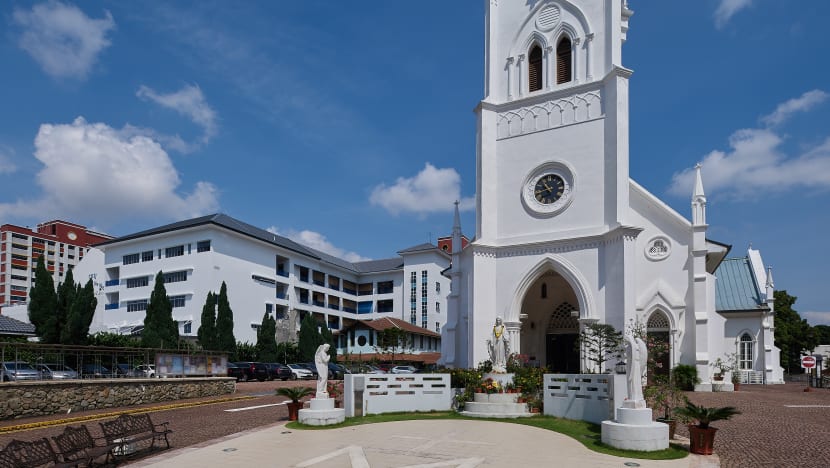
“Through our new Hougang Heritage Trail and our other trails, we hope to encourage Singaporeans to explore their own backyards during this period of travel restrictions, and rediscover local heritage delights,” said NHB’s Deputy Chief Executive (Policy & Community) Alvin Tan.
“In doing so, we hope that Singaporeans will come away with a renewed appreciation of what Singapore has to offer in terms of unique heritage experiences with a strong local appeal.”
READ: Vintage playgrounds and staycation spots of the '70s: 5 hidden gems in Pasir Ris
Here are some things you may not know about Hougang:
Why is it pronounced “Au Kang”?
The first documented use of “Au Kang”, which means “back of the river” in both Teochew and Hokkien, was in 1856. “Hougang” is the Mandarin version, which was introduced in 1980 for the new residential town that was being built at the time.
The name is a reference to Sungei Serangoon at the end of Upper Serangoon Road, where many Teochew-speaking inhabitants settled.
“While the old Teochew pronunciation has endured and the Teochew community continues to have a strong presence, much has changed,” NHB said.
“A strong, diverse mix of other communities and cultures has also developed and continues to accentuate the colourful character of one of Singapore’s oldest towns.”
It features several places of faith for different religions
Many of the places of faith in Hougang originate from the early kampung days.
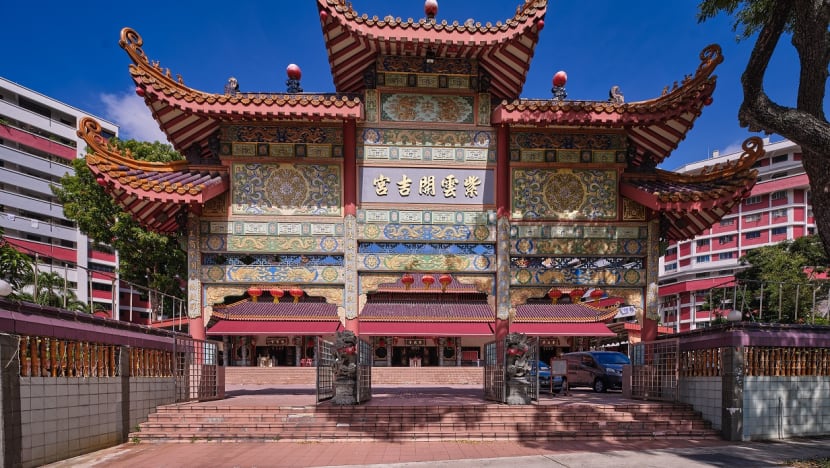
The arrival of Catholic Teochew immigrants from China in the 1800s led to the establishment of religious institutions in the area, NHB said.
This includes the Church of the Nativity of the Blessed Mary, the oldest place of worship in the area and a national monument featured on the heritage tour. It continues to provide religious services in Teochew today.
Hougang Tou Mu Kung, the oldest temple in Singapore dedicated to the Nine Emperor Gods, is also featured on the trail. It began as a shrine in Lim Loh village in 1902 and remains well known for its grand celebrations during the annual Nine Emperor Gods festival, NHB said.
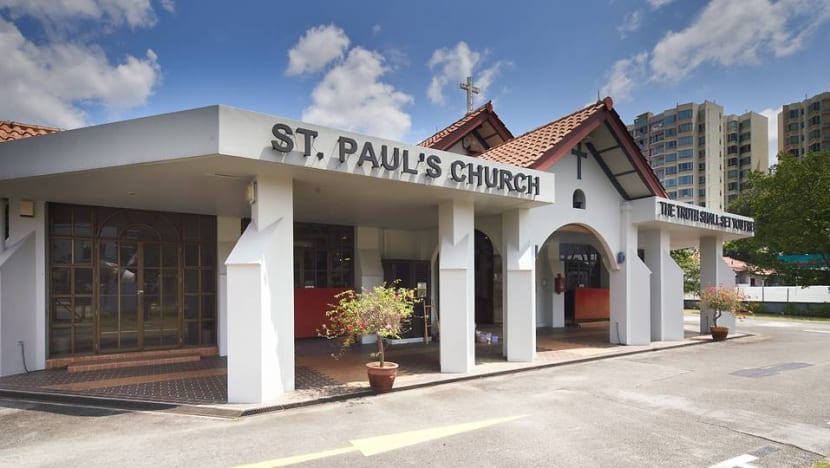
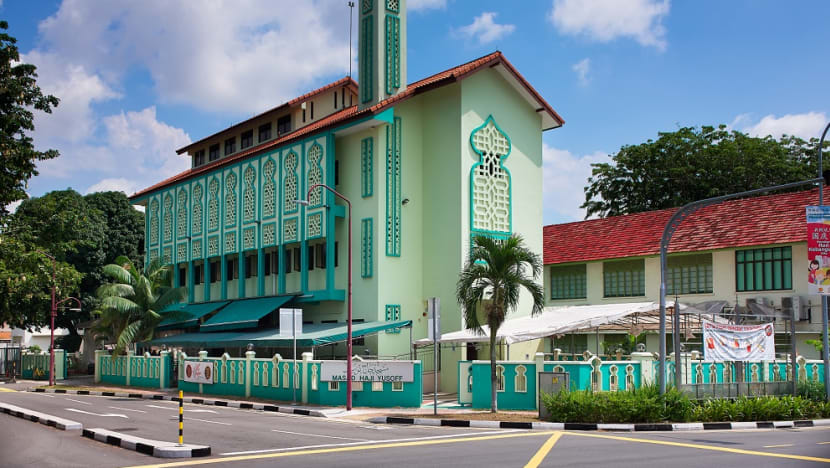
Also featured are St Paul’s Church, Masjid Haji Yusoff, and Taoist and Buddhist temples, which were established to serve devotees from different clans and dialect groups.
READ: Nine historical gardens open at Fort Canning Park
READ: 7 things you probably didn’t know about Telok Blangah: Pirates, kings, and a healing spring
Hougang is home to several community institutions
Hougang is also home to several institutions that were established to serve the community. They helped provide medical care, education and social support, as well as advancing community bonding.
Among these institutions is the Ramakrishna Mission, which bought the land at Bartley Road in 1941 and built a boys’ home for those affected by the war, as well as a temple in 1954 for devotees of Sri Ramakrishna.
Another institution, Phoh Kiu Siang T’ng, started in 1929 at Upper Circular Road - itself a Teochew enclave then - and moved to Simon Lane in 1953.
It started by providing funeral services to members and dispensing medicine to the poor, NHB said, adding that it operates a free clinic today.
Also in the area is the Serangoon Khiung Jai Co-Villagers Association, which represented and served the Hainanese living in Lorong Ah Soo.
It continues to be active in fostering ties among the Hainanese in Singapore.
Look out for unique architectural features
Hougang is home to a number of buildings and Housing Development Board (HDB) blocks with unique architectural features such as curved columns and stepped pitched-roof buildings.
The first town centre at Hougang Street 21 was designed with elements of colonial architecture referencing Singapore’s pre-war bungalows, which include low-rise buildings with rounded arches, multi-paned windows and louvres.
The second town centre, located at Hougang Central, can be distinguished by a pair of blocks with stepped pitch-roof buildings, a callback to Hougang’s rural past.
In the 1980s, HDB started to create a distinctive identity for different housing estates.
In Hougang, they introduced curvatures to its buildings with rounded balconies and curved columns. Some blocks were decorated with murals, including the iconic Block 316, which has a rainbow mural, and Block 25, which features a sky mural.

While Block 316 has been repainted a number of times and each reiteration resulted in a new design, it has always been adorned with a rainbow mural.
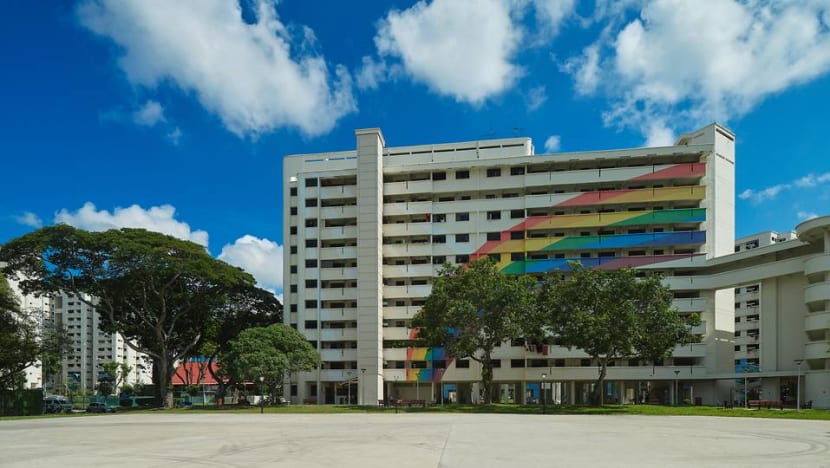
Crocodile farms and Singapore's first fast-food outlet in a housing estate
Hougang was the first estate in Singapore to have a fast-food outlet when McDonald's opened one in its town centre in 1984. It remains in its original location today.
The estate was also formerly home to a number of crocodile farms.
This includes the Singapore Crocodile Farm, which was established in 1945 and had about 600 crocodiles by the 1980s. Other smaller farms were also in the area.
Hougang Plaza, which opened in 1993, was touted as the first "all entertainment complex in an HDB estate". It provided recreational facilities such as a bowling alley, billiards hall and a cineplex to residents until it was demolished in 2013.
Editor’s note: This article has been updated to reflect a correction by NHB on the arrival of Catholic Teochew immigrants in Singapore in the 1800s.












